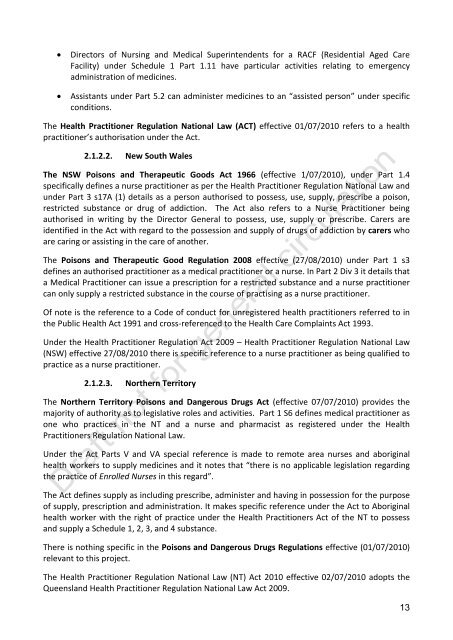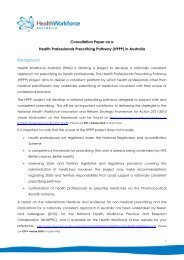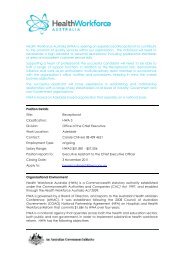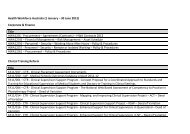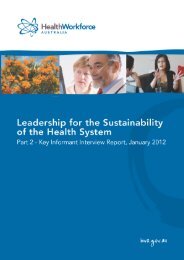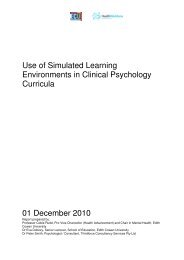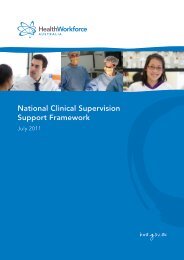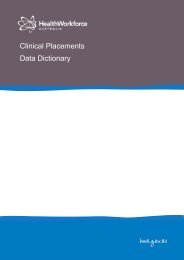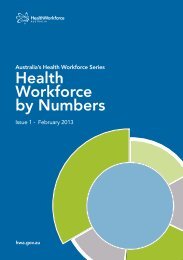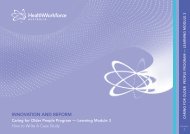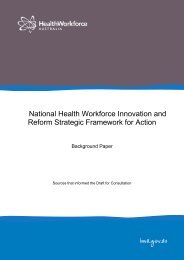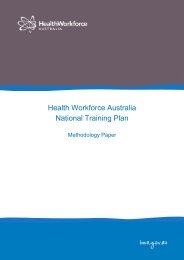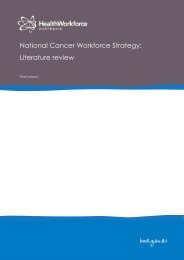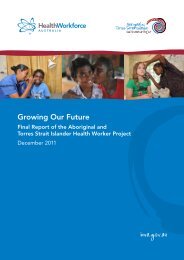SUMMARY - Safe Medications Management project: Key issues and ...
SUMMARY - Safe Medications Management project: Key issues and ...
SUMMARY - Safe Medications Management project: Key issues and ...
Create successful ePaper yourself
Turn your PDF publications into a flip-book with our unique Google optimized e-Paper software.
Directors of Nursing <strong>and</strong> Medical Superintendents for a RACF (Residential Aged CareFacility) under Schedule 1 Part 1.11 have particular activities relating to emergencyadministration of medicines.Assistants under Part 5.2 can administer medicines to an “assisted person” under specificconditions.The Health Practitioner Regulation National Law (ACT) effective 01/07/2010 refers to a healthpractitioner’s authorisation under the Act.2.1.2.2. New South WalesThe NSW Poisons <strong>and</strong> Therapeutic Goods Act 1966 (effective 1/07/2010), under Part 1.4specifically defines a nurse practitioner as per the Health Practitioner Regulation National Law <strong>and</strong>under Part 3 s17A (1) details as a person authorised to possess, use, supply, prescribe a poison,restricted substance or drug of addiction. The Act also refers to a Nurse Practitioner beingauthorised in writing by the Director General to possess, use, supply or prescribe. Carers areidentified in the Act with regard to the possession <strong>and</strong> supply of drugs of addiction by carers whoare caring or assisting in the care of another.The Poisons <strong>and</strong> Therapeutic Good Regulation 2008 effective (27/08/2010) under Part 1 s3defines an authorised practitioner as a medical practitioner or a nurse. In Part 2 Div 3 it details thata Medical Practitioner can issue a prescription for a restricted substance <strong>and</strong> a nurse practitionercan only supply a restricted substance in the course of practising as a nurse practitioner.Of note is the reference to a Code of conduct for unregistered health practitioners referred to inthe Public Health Act 1991 <strong>and</strong> cross-referenced to the Health Care Complaints Act 1993.Under the Health Practitioner Regulation Act 2009 – Health Practitioner Regulation National Law(NSW) effective 27/08/2010 there is specific reference to a nurse practitioner as being qualified topractice as a nurse practitioner.2.1.2.3. Northern TerritoryThe Northern Territory Poisons <strong>and</strong> Dangerous Drugs Act (effective 07/07/2010) provides themajority of authority as to legislative roles <strong>and</strong> activities. Part 1 S6 defines medical practitioner asone who practices in the NT <strong>and</strong> a nurse <strong>and</strong> pharmacist as registered under the HealthPractitioners Regulation National Law.Under the Act Parts V <strong>and</strong> VA special reference is made to remote area nurses <strong>and</strong> aboriginalhealth workers to supply medicines <strong>and</strong> it notes that “there is no applicable legislation regardingthe practice of Enrolled Nurses in this regard”.The Act defines supply as including prescribe, administer <strong>and</strong> having in possession for the purposeof supply, prescription <strong>and</strong> administration. It makes specific reference under the Act to Aboriginalhealth worker with the right of practice under the Health Practitioners Act of the NT to possess<strong>and</strong> supply a Schedule 1, 2, 3, <strong>and</strong> 4 substance.There is nothing specific in the Poisons <strong>and</strong> Dangerous Drugs Regulations effective (01/07/2010)relevant to this <strong>project</strong>.The Health Practitioner Regulation National Law (NT) Act 2010 effective 02/07/2010 adopts theQueensl<strong>and</strong> Health Practitioner Regulation National Law Act 2009.13


